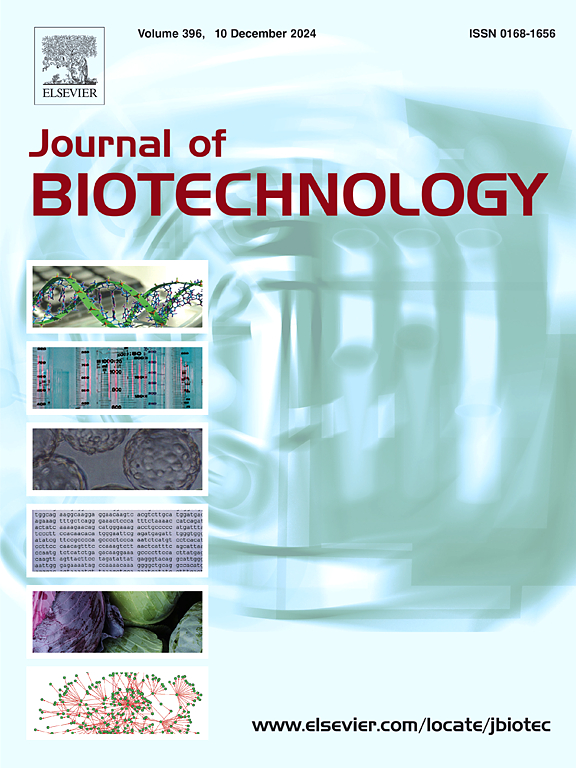Comparative characterisation of autotrophic and heterotrophic isopropanol formation by Cupriavidus necator in shake flasks
IF 4.1
2区 生物学
Q2 BIOTECHNOLOGY & APPLIED MICROBIOLOGY
引用次数: 0
Abstract
Autotrophic cultivation offers a path to carbon-neutral bioproduction, which is increasingly valuable in the context of climate change mitigation. In this study, the production of isopropanol by Cupriavidus necator is used as an example for CO2 valorisation, and a simple shake bottle system is introduced to facilitate the development of aerobic autotrophic cultivation processes and strain screening. Applying 1.5 bar overpressure in the bottle's headspace enhances gas transfer while pressure decrease was shown to be correlated to biomass and product formation, allowing to follow metabolic activity without sampling. After optimizing cultivation parameters and nickel feeding strategy, the system was applied to compare three different isopropanol-producing strains. The highest autotrophically obtained isopropanol concentration was 2.2 ± 0.5 g L−1 with a specific yield of 0.9 ± 0.2 g gCDW−1 and a minimal by-product concentration of 0.05 ± 0.01 g L−1 acetone. Heterotrophic cultivations were carried out for comparison, obtaining up to 3.4 ± 0.2 g L−1 final isopropanol concentration with a specific yield of 1.4 ± 0.1 g gCDW−1. Although the use of CO2 instead of fructose resulted in a slower process, the overall isopropanol production is promising. This study provides valuable insights into strain behaviour while demonstrating the utility of the presented shake bottle system for advancing autotrophic process development.
求助全文
约1分钟内获得全文
求助全文
来源期刊

Journal of biotechnology
工程技术-生物工程与应用微生物
CiteScore
8.90
自引率
2.40%
发文量
190
审稿时长
45 days
期刊介绍:
The Journal of Biotechnology has an open access mirror journal, the Journal of Biotechnology: X, sharing the same aims and scope, editorial team, submission system and rigorous peer review.
The Journal provides a medium for the rapid publication of both full-length articles and short communications on novel and innovative aspects of biotechnology. The Journal will accept papers ranging from genetic or molecular biological positions to those covering biochemical, chemical or bioprocess engineering aspects as well as computer application of new software concepts, provided that in each case the material is directly relevant to biotechnological systems. Papers presenting information of a multidisciplinary nature that would not be suitable for publication in a journal devoted to a single discipline, are particularly welcome.
 求助内容:
求助内容: 应助结果提醒方式:
应助结果提醒方式:


